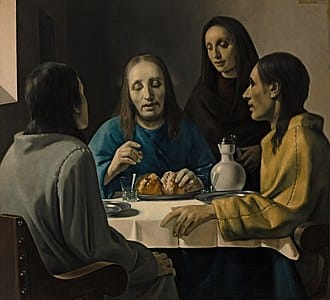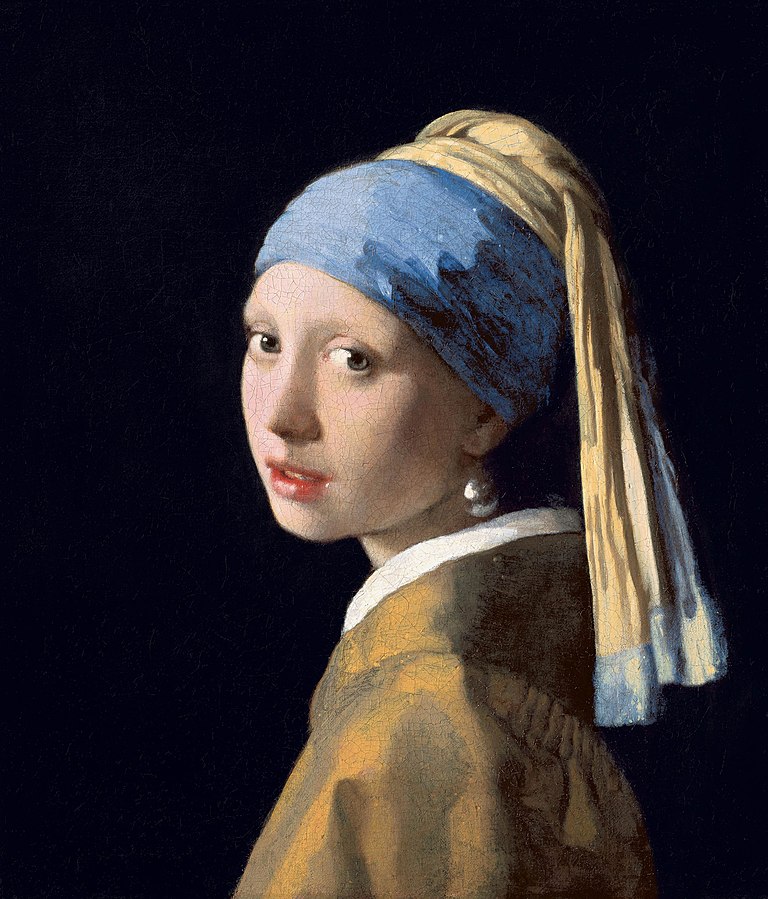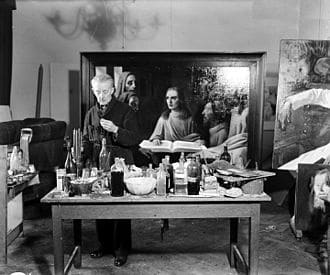Originally titled Een echte Vermeer in Dutch, English speakers will find the film under the title “A Real Vermeer.”
Director Rudolph van den Berg received critical acclaim and was nearly in the running for an Academy Award in the Foreign Language category.
You’ll find versions with the English title have subtitles while actors including Jeroen Spitzenberger, Lize Feryn, and Roeland Fernhout speak Dutch throughout.

What Is the Plot of a Real Vermeer?
Technically gifted but struggling artist Han van Meegeren‘s life is chaotic as critics pan his original paintings as derivative of Dutch masters, rather than breaking new ground in the mode of Cubism or Surrealism.
To make matters more complicated, his wife leaves with his son when she finds out he’s fallen in love with a stage actress.
In the midst of an existential crisis while his career stalls, he begins to evaluate a non-traditional approach to an art career.
He begins to recreate the paints used by the masters, using original pigments such as Indigo and white lead, rather than purchasing commercially produced paint. He created his own paintbrushes out of badger-hair as well.

The final ingredient to create a “perfect forgery” is a form of plastic that acted as a hardening agent called Bakelite. By mixing it with his hand-crafted paints and then baking and processing the canvases afterward, his ability to mimic the style of old masters paired with his proprietary fake aging process makes his pieces indistinguishable from those produced in that era.
What happens next? We don’t want to ruin the rest of the film for you, but let’s just say his unique skill set and process allow him to make a lot of money in the art world and get in lots of trouble.
How Did van Meegeren’s Escapades Impact Vermeer’s Legacy?
At present, Johannes Vermeer is considered an old master, belonging to the Dutch Baroque Period, but he was not highly regarded until much later. Working from Delft, Vermeer left his wife and children in debt at his passing.
For the subsequent centuries, he was not referenced in any of the well-known surveys of artists of the period. That changed in the 1800s, however. Gustav Friedrich Waagen and Théophile Thoré-Bürger covered his work attributing 66 paintings to him, although as with many pre-21st century artists, the count of “official” works has changed dramatically since then with the current count being 34.
34 paintings? That’s not too many. As with any collectible item, scarcity tends to drive the value up. When Van Meegeren chose to forge Vermeer, he had a strong market.
During this general period, Vermeer’s greatness was being celebrated from elsewhere as well. Salvator Dali did a version of “The Lacemaker” and “The Ghost of Vermeer of Delft Which Can Be Used As a Table.”
Vermeer’s “Girl with a Pearl Earring” is possibly his best-known work, also known as the “Mona Lisa of the North,” and is considered representative of the Golden Age of Dutch painting.
This canvas is a great success due to its particular atmosphere characteristic of the Dutch artist. Each of his paintings represents scenes of life that leave the imagination free: the story told is subject to many interpretations.
Vermeer probably used a model for this painting, possibly even one of his daughters. This painting cannot be qualified as a portrait because the features of the skin of the face are not detailed enough to be the subject.
Indeed one cannot distinguish moles, scars, or even freckles. Moreover, her nose does not have a ridge. We can then qualify this painting as a “tronie” more than a portrait: a distinctive genre of painting that mixes portrait, history painting, and genre scene. We often find faces with accentuated expressions, sometimes even eccentric.
How Is van Meegeren Viewed Today?
Van Meegeren played many roles; in some, he intended to deceive people, such as when he sought to fool his critics. From the beginning, it is possible that his father foresaw the path he would take since he said to him one day: “You are a cheat, and you always will be.” But on the other hand, his brothers and sisters saw him as loyal, generous, and affectionate, and he always loved his children.
To the question “what was his character?” it is therefore impossible to answer in a brutal way. Indeed, recent work challenges many of the existing assumptions about van Meegeren and the motivations behind his career as a forger. With him, everything is double-sided, and his character comes in fragments rather than as a whole.
After his release, he continued to paint, signing his works with his own name. His newfound popularity guaranteed him a quick sale of his new paintings, often at prices several times higher than before he was exposed as a forger.
Van Meegeren also assured the media that he “had received an offer from a gallery in Manhattan to come to the United States and paint portraits in the style of the 17th century at $ 6,000 apiece.”
An opinion poll carried out in the Netherlands in October 1947 placed Han van Meegeren second in popularity in the country, with only the prime minister ahead of him. The Dutch saw him as a cunning trickster who had successfully deceived scholars of Dutch art and, more importantly, Hermann Göring himself.
In fact, according to a contemporary account, when Göring learned that his “Vermeer” was actually a fake, “he made a face as if discovering for the first time that there was evil in the world.” Han van Meegeren will remain one of the most ingenious art forgers of the 20th century. After his trial, he nevertheless declared: “My triumph as a forger was my failure as a creative artist.”
Where Can You Watch “A Real Vermeer?”
Stream Now: https://hdtoday.tv/movie/watch-a-real-vermeer-hd-58680 (FREE)
Stream Now: https://www.amazon.com/Real-Vermeer-Jeroen-Spitzenberger/dp/B075H2Z3QT (PAID)
Would This Type of Forgery Be Possible Today?
While it is common for artists to draw inspiration from works produced by others, many artists today take legal action to protect their work and creations.
These “inspirations” can establish a dialogue between the works for an artistic or critical purpose, as evidenced, for example, by the famous addition of mustaches to a reproduction of the Mona Lisa by Marcel Duchamp in his 1919 Dada painting. Nevertheless, the exercise of artistic freedom must not infringe on the recognized rights of authors; the use of a work without the consent of its author is likely to constitute an infringement.
In the near term, it would appear that forgeries of deceased artists still possible. A famous case in Florida is being investigated wherein Basquiat paintings that were supposedly in storage until well after his death appeared, eventually being shown an Orlando Museum. Since the artist is around to confirm or deny their authenticity, the case will be decided based on the investigation.
Living artists, however, can take advantage of new technology such as physical NFTs to record their work in a 3rd party ledger that maintains the connection between the work and the artist profile. ETChster’s Etchings are one such tool, verifying authenticity and provenance within The Encyclopedia of Objects. For those unfamiliar with physical NFTs why not check out our article “What Is a Physical NFT and How to Use It”
Conclusion
If you’re into true-crime, historical drama, romance, or just like to watch movies about artists, “A Real Vermeer” is for you.
The film is beautifully rendered with great cinematography and acting as well. You can also choose to classify it as educational, with its depiction of a the Netherlands in the period around World War II.




